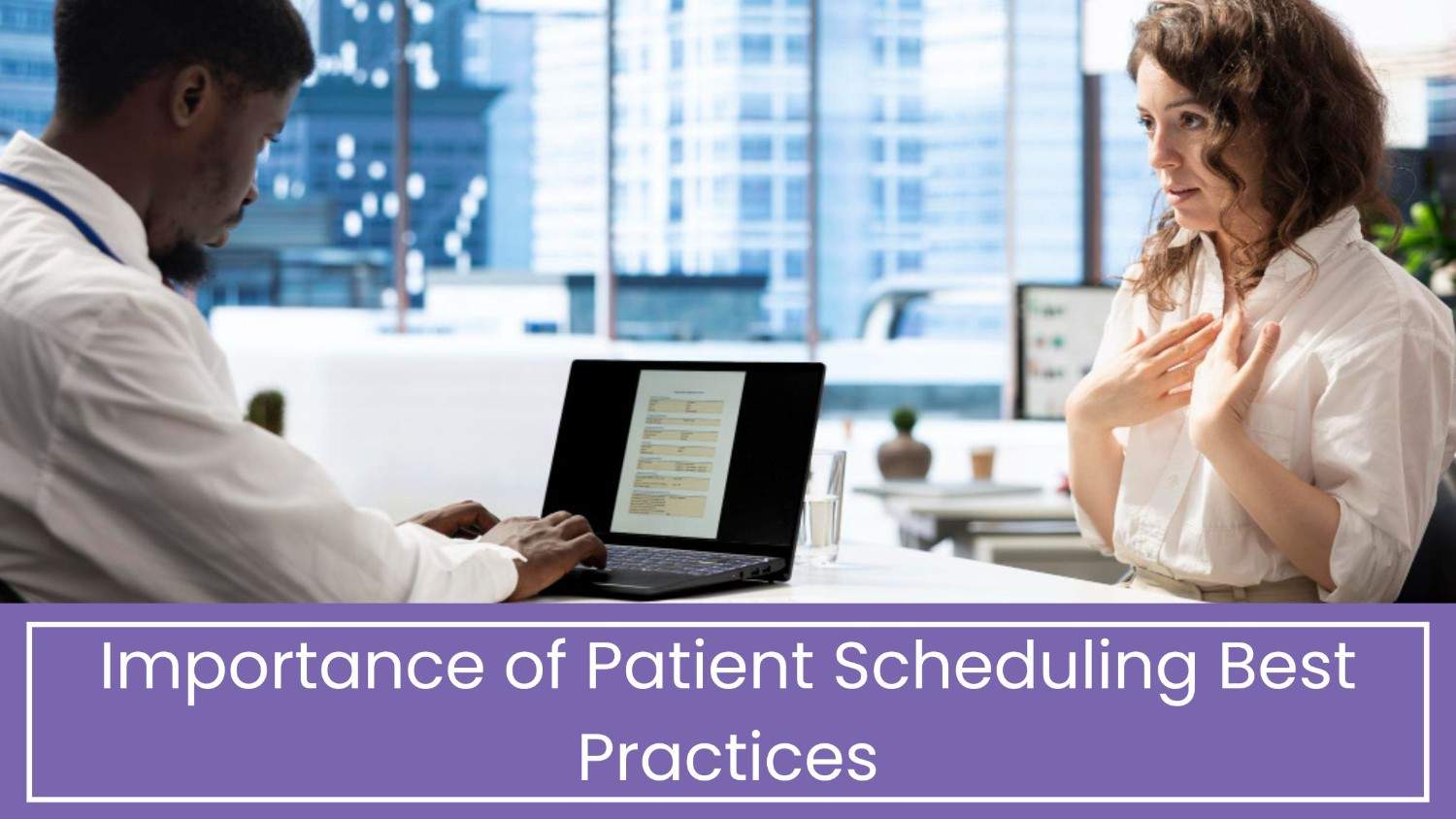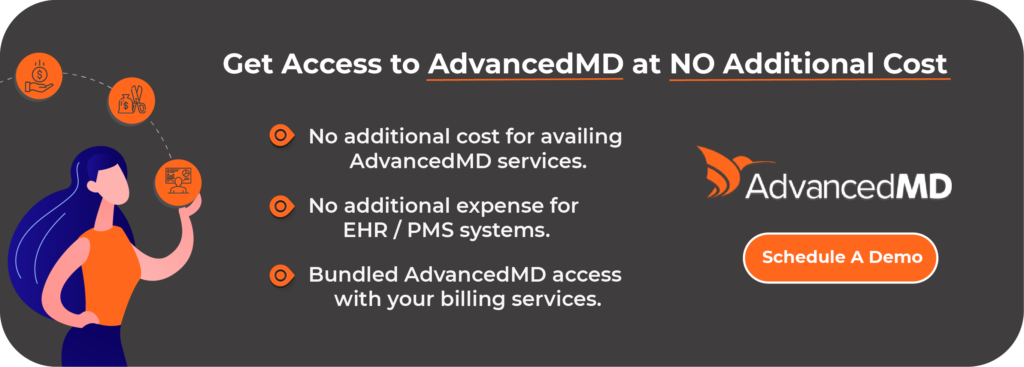Importance of Patient Scheduling Best Practices
The importance of patient scheduling best practices centres on effectively managing appointments to ensure smooth operations in healthcare practices. Patient scheduling plays a vital role in coordinating consultations, follow-ups, and medical procedures, allowing providers to make the best use of their resources while minimizing patient wait times. Efficient scheduling enhances the patient experience, ensuring timely access to care and improving overall satisfaction. By adopting proven best practices, healthcare organizations can boost operational efficiency, reduce scheduling errors, and promote better health outcomes through consistent and patient-centred care.
In a healthcare setting, patient scheduling can be a complex task, as it requires balancing the availability of healthcare providers and facilities with the needs and preferences of patients. A scheduling system that is easy to use and allows patients to book and manage appointments conveniently can help healthcare providers improve patient satisfaction and loyalty. Moreover, patient scheduling systems can enable healthcare providers to streamline administrative tasks, such as appointment reminders and confirmations, which can improve patient adherence to appointments and reduce no-shows.
Continue reading to know more about the significance of an effective scheduling system, along with helpful practices for improving appointment scheduling.
Table of Contents
Why Is Patient Scheduling So Important?
Patient scheduling is a crucial aspect of healthcare operations for several reasons:
- Timely and appropriate care: Patient scheduling ensures that patients receive timely and appropriate medical care, which is essential for their health and well-being. A delay in receiving medical attention can exacerbate health conditions, leading to more severe health outcomes. Efficient patient scheduling ensures that patients receive care when they need it, reducing the risk of complications and improving health outcomes.
- Resource optimization: Patient scheduling helps healthcare providers optimize their resources, including the availability of healthcare providers and facilities. By scheduling appointments efficiently, providers can reduce wait times and ensure that resources are used effectively, improving the quality of care.
- Patient satisfaction: Efficient patient scheduling helps improve the patient experience, which is critical for patient satisfaction and loyalty. A scheduling system that is easy to use and allows patients to book and manage appointments conveniently can help improve patient satisfaction and loyalty.
- Administrative efficiency: Patient scheduling systems can help healthcare providers streamline administrative tasks, such as appointment reminders and confirmations, which can improve patient adherence to appointments and reduce no-shows. Additionally, scheduling systems can help providers manage patient wait times, which is a critical factor in patient satisfaction and experience.
The 6 Best Patient Appointment Scheduling Practices
1. Implement Patient Self-Scheduling
Implementing patient self-scheduling is a best practice for efficient patient appointment scheduling. Patients are progressively searching for easier methods to get healthcare services as technology has advanced. Patient self-scheduling is an effective way to meet patient expectations while streamlining scheduling processes for healthcare providers.
One of the main benefits of patient self-scheduling is improved patient satisfaction.
Healthcare professionals do provide patients with the option to schedule visits at their own pace by allowing them to make appointments online. Patients no longer need to call or visit the healthcare provider’s office, which can save them time and reduce frustration.
Another benefit of patient self-scheduling is increased patient access to care. Patients who may have difficulty accessing healthcare services due to geographical or scheduling limitations can benefit from the convenience of online scheduling. This can increase patient retention and attract new patients to the practice.
2. Prioritize Appointments
Prioritizing appointments is a best practice for efficient patient appointment scheduling in healthcare. By prioritizing appointments, healthcare providers can ensure that patients receive timely and appropriate care while maximizing the use of healthcare resources.
One of the key factors in prioritizing appointments is the medical urgency of the patient’s condition. Patients with urgent medical needs should receive priority scheduling to ensure they receive timely care. Patients in extreme pain, injuries, or acute diseases who require quick treatment fall under this category.
Another consideration in prioritizing appointments is the complexity of the patient’s medical needs. Patients with more complex medical needs may require longer appointments or multiple appointments to address all of their healthcare concerns. By prioritizing these appointments appropriately, healthcare providers can ensure that patients receive the appropriate level of care while avoiding unnecessary delays.
3. Create an Automated Patient Wait List
An Automated Patient Wait List is a modern and efficient solution that can revolutionize the way healthcare facilities manage their patients’ appointments. With this system, patients can be added to a digital waitlist that automatically updates and notifies them of any changes in their appointment status. This approach eliminates the need for manual tracking and reduces the likelihood of errors or miscommunication.
To create an automated patient wait list, healthcare facilities will need to implement a specialized software application that can manage the waitlist efficiently. This application will need to be designed to integrate with the facility’s existing electronic health record system and appointment scheduling software.
The first step in creating an automated patient wait list is to define the process for adding patients to the list. This may involve adding patients who have requested an appointment but cannot be scheduled immediately, or those who need to reschedule an appointment. Whenever a patient no longer requires an appointment, the software should enable them to remove their name from the backlog.
Once the patients are added to the waitlist, the software will automatically track their status and notify them of any changes. For example, if a patient is moved to an earlier appointment time, the software will automatically send them a notification to confirm the new time. Similarly, if a patient’s appointment is cancelled, the software will notify them and remove them from the waitlist.
4. Confirm Appointments with Text and Email
Confirming appointments with text and email is an efficient and effective way to reduce no-shows and ensure that patients attend their scheduled appointments. This approach provides patients with a convenient way to confirm their appointment, which can help them remember the date and time of their visit.
To confirm appointments with text and email, healthcare facilities can implement a software application that integrates with their appointment scheduling system. This software automatically sends out a text or mail notification to patients just a few days ahead of their scheduled appointment.
The SMS and mail notifications/reminders must include the initial appointment time, date, and address, in addition to a link or contact details to check their attendance. Patients can easily respond to the message by clicking on the link or calling the provided phone number. Once the patient confirms their attendance, the software will update their appointment status in the scheduling system
5. Use automated outreach, follow-up, and recall for patients
Automated patient outreach, follow-up, and recall are modern solutions that can enhance patient engagement and improve the overall quality of care provided by healthcare facilities. This approach uses specialized software applications to automate patient outreach, recare, and recall processes, making it easier for healthcare providers to stay in touch with their patients and ensure they receive the care they need.
Automated patient outreach entails calling patients to notify them of the scheduled appointments or to give them essential health information. Healthcare facilities can use this approach to keep their patients informed and engaged, which can improve overall health outcomes. Automated outreach can be done through a variety of channels, including email, text messages, and phone calls.
6. Automate Responses to Routine Questions
Automating responses to routine questions is an efficient way for healthcare facilities to improve their patient communication and reduce the workload of their staff. By automating responses, healthcare facilities can respond quickly and accurately to common questions, freeing up staff to focus on more complex and urgent patient needs.
Automating responses to routine questions also provides healthcare facilities with valuable data on patient inquiries and engagement. By analyzing this data, healthcare providers can identify areas where they need to improve their communication strategies and make informed decisions on how to optimize their resources to better serve their patients.
AdvancedMD Software offers the best Patient Scheduling option!
AdvancedMD is an innovative and comprehensive patient scheduling software that allows healthcare providers to manage patient appointments and resources. It offers flexible appointment scheduling options to accommodate the demands of various types of clinics/ practices. It also provides users with a comprehensive suite of features including scheduling and reminder tools, and online payment capabilities. The software provides a streamlined interface that makes it easy to operate and access resources. It also offers online support to users who need additional assistance with the system.
Patients want convenient scheduling options that help them manage their time. They want to be able to access their records easily, make updates to appointments, and even pay their bills online without having to travel to the office.
AdvancedMD’s solutions provide all of these features, so you can give your patients a better experience, increase satisfaction levels, and help streamline your business operations. They can make it easier for patients to access your services without having to come into the office. They can also use the features to record new appointments and add notes, which can be helpful for doctors looking for ways to improve the quality of care they provide to patients.
Your Patient Scheduling Partner!
Practolytics along with AdvancedMD offers Patient Scheduling, which helps medical offices and clinics organize their workflow to improve efficiency and control costs. We help providers manage appointments and take bookings in one easy-to-use platform.
Also, we offer advanced scheduling features, such as booking appointment windows, automated reminders, time tracking and more. We help providers to record patients’ Electronic Medical Records (EMR) to keep track of their medical history, which can help improve care quality and patient satisfaction.
To know more about our Patient Scheduling, email us at: [email protected] or +(803) 932-9624 (or) +(678) 940-8115.
DOWNLOAD FREE E-BROCHURE – Benefits of AdvancedMD Access Through Practolytics
Talk to Medical Billing Expert Today — Get a Free Demo Now!






